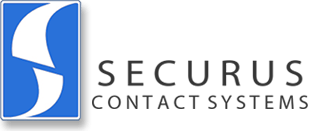Finding the right candidate, negotiating salary and benefits, and finally making a job offer can be trying for even the bravest of souls.
Now it’s time to welcome the new hire to their first day on the job. It’s an exciting time for the employee and the employer, yet some companies don’t prioritize onboarding. As HR professionals we are responsible for getting the legal requirements handled, providing a basic orientation to the office layout, and something often missed: setting up your employee for success right out of the gate with helpful information, office tools and scheduled meetings with appropriate staff members.
Onboarding: Day One
The Application Form: Take the time to review your application form to make sure it looks professional. If it is a copy of a copy that someone made long ago, it may be time to get a new, clear application form for your prospects to fill out. The paperwork that you present to a new employee is part of your image and sets the professional tone of the office.
Also, if you have not updated your application form in years, you just might find that there are some updates needed that you were not aware of. For example, many states have adopted the “Ban the Box” policy. This law says in short that applicants may not be asked about criminal convictions before a conditional offer of employment. There are some exceptions to this law when it comes to specific jobs in child care or financial industries. If your application form has the question, “Have you ever been convicted of a felony?” on it, it is time to replace that application with a newer updated form.
The reasoning behind this movement is that studies have shown that recidivism is significantly reduced when people that have paid their debt to society are able to get gainful employment in their chosen field of work.
When the new hire is offered the job, be sure to include what they must provide in order to be paid for their first day of work, or even to begin their work!
The I-9 form is a federal document used to verify that a person is legally qualified to work in the United States. The form requires that the employer inspect the documents presented to prove identity and citizenship, but employers may not determine which of the relevant documents should be provided. The I-9 does list the types of documents that can be presented so that should be used as a guide. As a side note, many HR pros take copies of the documents provided, but the I-9 form does not explicitly state that it is necessary to do so. All it suggests is that the physical documents must be inspected, it does not say they have to be copied and attached.
One more note on the I-9 form: The current form was updated in 2018. Inspect your forms to see it is the correct I-9. This version is set to expire or be reissued in late August 2019.
The W-4 form is used for federal tax purposes. It’s an agreement between the IRS and the employee. It is used to instruct the employer on how much of the employee’s taxable income is to be withheld from each paycheck based on their personal allowances. Some employees are confused by this form and will ask “So, how much should I claim?” Unless you are a CPA or tax attorney, you should not try to answer that question. If they are concerned, you can ask them how much they claimed at their last job and that should make things easier for them. If they are unsure, the form is easy to read and understand and comes with its own set of instructions. The employee should take the time to read through it and even consult with someone they trust before signing it. If they do make a mistake and they claimed too few or too many withholdings, they can always change their allowances later. There is no limit on how many times a person can change their allowances. It is up to the employee to make sure that they are setting enough money aside to pay their taxes.
The Employee Handbook is a policy manual that should be reviewed by an HR professional at least once a year to make sure that it is relevant and does not inadvertently include policies that are outdated or even illegal. Over the past few years there have been many changes to HR laws in several states. As a result, an old policy manual is not doing you any favors.
Your policy manual should also include a signature page that states that the employee has read and agrees to follow the policies as outlined in the manual. And like the other forms I mentioned, this form should be kept in their personnel file.
Background Checks are an important tool to manage with consistency and to follow your states’ current laws. Some states have adopted laws where an employer can only conduct a background check after an initial offer of employment. Several companies provide background checks for you. Research to find one that will suit your needs and your budget.
You will also need to get a signed waiver from the employee or prospect before doing the background check. This waiver gives the employee or prospect an overview of his or her rights under the Fair Credit Reporting Act. Many of the background check companies also provide a template for employees that fail the background check called the Adverse Action notice. This notice informs them of their rights to get a report that they can contest if there is conflicting information in the report.
There are other forms that you may consider including a Confidentiality Agreement, Waivers for the use of the company gym, equipment/uniform assignment forms, policy addendums, holiday policy, attendance policy and callout protocol. All of these documents are there to protect the employee and the employer and to educate new hires on the basics of organizational structure.
Click Here For the Ultimate Guide to Employee Onboarding, Part II

Located in Happy Valley, OregonWe work with clients across theUnited States and CanadaGet in touch with us!
Office: 877.310.6676
Fax: 866.666.3191


